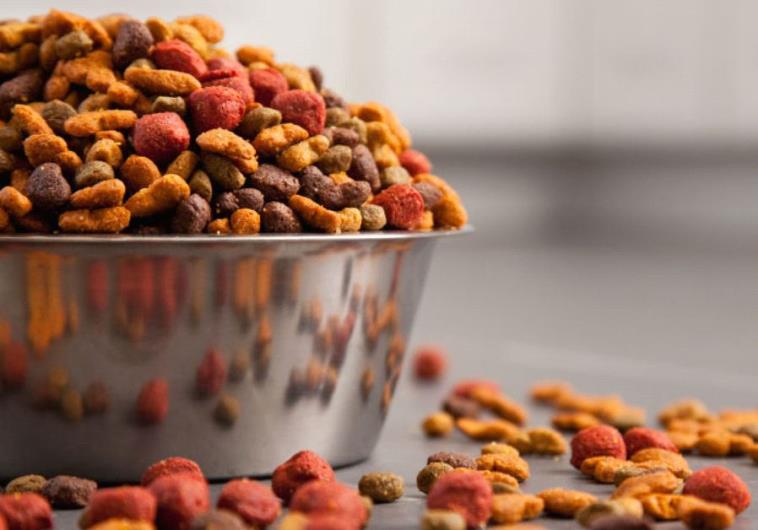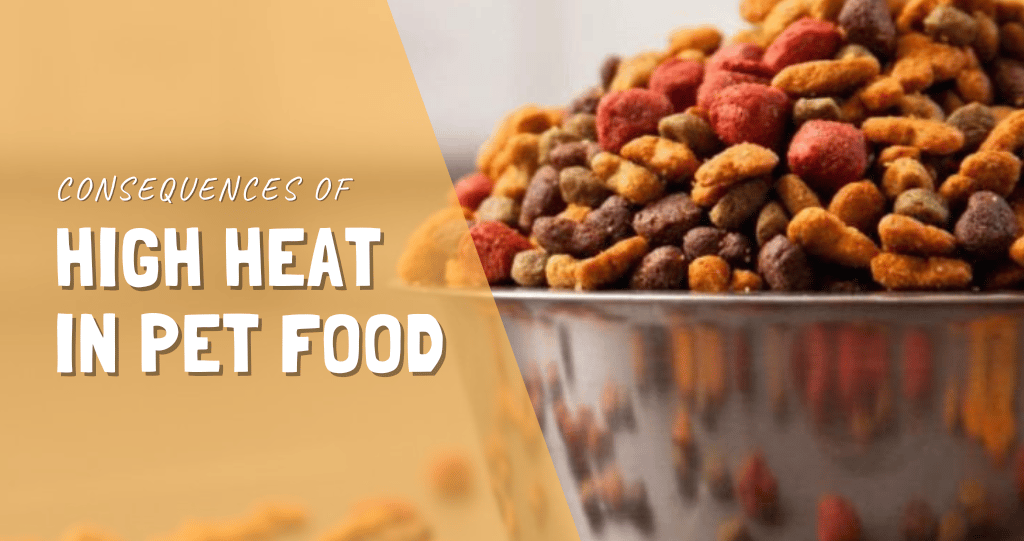Did you know that a lot of the nutrients in your food get destroyed if they’re exposed for too high temperatures? Yes, that’s right! A good example is when you’re cooking broccoli for dinner. The level of vitamin C can decrease by 50% when boiled compared to eating raw. The way heat affects the nutritional value is something worth considering when buying food for your pet.
About 95% of dry pet foods are made by a process called extrusion and that’s what we’ll be looking at in this article. A study from Wageningen University in the Netherlands shows that drying pet food at 160°C (320°F) to 180°C (356°F) can significantly reduce its nutritional value. Sometimes temperatures can even reach 200°C (400°F) during commercial pet food
The high temperatures cause radical changes to the ingredients compared to their raw state. So let’s dig a bit deeper and explore which consequences high temperatures have relating to pet food:
1. Vitamins take damage
Most vitamins are sensitive to heat or water. As mentioned above, the most common production method, extrusion, includes high temperatures. Vitamins like vitamin A, vitamin C, Vitamin E and the B-group vitamins are either destroyed or heavily decreased in the extrusion process.
All these vitamins are crucial for your dog’s or cat’s health. Vitamin A is, for instance, important for cell growth and promotes healthy skin and coat for dogs and cats. It’s essential for cats’ night vision as well.
Typically, pet food brands have to include
2. Decreased level of antioxidants, omega 3 & 6
The level of antioxidants decreases during high temperatures. Antioxidants play a major role in your pet’s health since they inhibit oxidation (a chemical reaction that can produce free radicals). These free radicals attack cell membranes, proteins and DNA – but that process is being stopped by antioxidants.
A study found that older dogs were less likely to suffer from age-related behavioural changes associated with cognitive decline when eating a diet rich in antioxidants. Dogs eating a diet rich in anti-oxidants also recognized their family members more easily compared to the control group. Antioxidants have also been shown to help dogs and cats with allergies or skin and coat issues.
High temperatures also decrease the level of omega 3 and omega 6 and can increase the concentration of oleic acids (omega 9 monounsaturated) and potentially toxic compounds.

3. Starch gelatinization
Commercial pet food manufacturing requires enormous amounts of carbohydrates/starch to bind the kibble together. This is
During the extrusion process, the ingredients are exposed for high heat which results in the starch in the mixture melting – it gelatinizes. That helps form the kibble and causes an expansion of the product.
Typically, the percentage of starch found in dog food is 40% and in cat food 30% – however, some brands include twice that amount. Mainly, the starch comes from cereal grains – and these are not biologically appropriate nutrition for either dogs or cats.
Large inclusions of starch can cause large swings in blood sugar level in your dog after eating his meal. An example is extruded rise. It can cause higher glucose and insulin response compared to other starches like barley, corn and wheat. This is worth considering if your pup struggles with diabetes
4. Structure changes in proteins
High heat results in changes in the molecular structure of a protein – this is called denaturation. It involves the breaking of weak bonds within a protein. These bonds are responsible for the proteins highly ordered structure. Denatured proteins have a looser, more random structure. Once a protein is denatured there’s no going back. Think of it like scrambled eggs – once scrambled you can’t unscramble it.
Let’s jump over to the production of dry pet food and see how denaturation works.
The protein source in dry pet food is often a combination of animal and vegetable protein. In most cases, it’s much cheaper for companies to include protein from plant sources (eg. pea-protein, wheat gluten meal) than using large portions of meat. This raises the overall protein level of the food but has a much lower digestibility than protein from meat sources. However, denaturation helps these foods to become more digestible.
An opposite scenario happens when it’s a high-quality protein source – denaturation makes it less digestible. The changes in these proteins’ structure can result in food allergies. Research shows there’s a risk that the immune system may not recognize the new protein structure and treat it as a foreign invader. That can explain why some pets have an allergy to a particular meat-based dry food but no problem eating the same meat in whole, raw form.
It’s also important to notice that denaturation can cause

Pet parents are seeking for alternatives
The above-mentioned consequences; Loss of vitamins, decreased level of antioxidants, omega 3 & omega 6, starch gelatinization and structure change in proteins are just a handful of the things that
This might be one of the reasons why many pet parents are switching from kibble to a minimally processed diet like raw pet food.
You can check out our dehydrated cat food and healthy dog food here.
You may like:
- What’s The Difference Between Kibble & Air-Dried Pet Food
- 5 Misleading Label Tricks Pet Food Brands Use
- Is Coconut Oil Good For Dogs?
Feel free to share other consequences of high temperatures related to pet food in the comment section below:
PledgeCare’s blog posts are designed to help and inspire dog parents who wish a healthier every day for their dogs. If you’re curious about our air-dried raw, Malaysian, human-grade and super healthy dog food, check out pledgecare.org.

